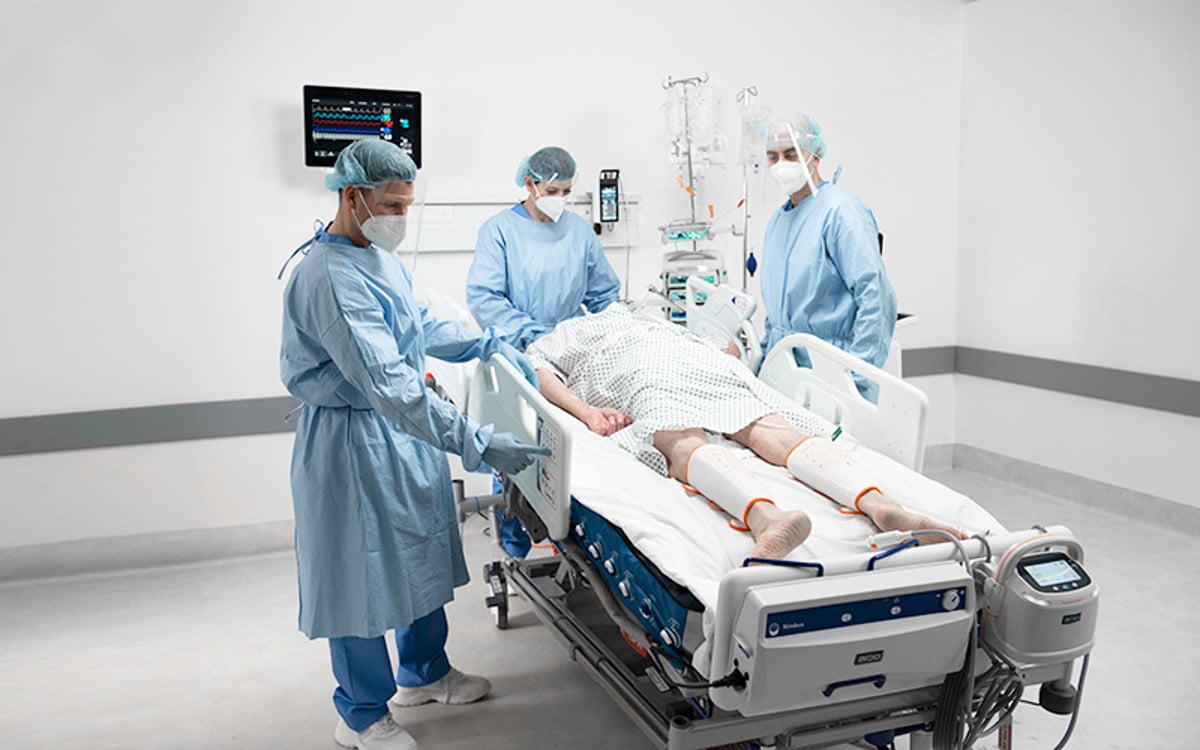Prone positioning with Arjo helps to:
1. Lower the risk of musculoskeletal injury and improve care efficiency
Patient handling solutions assist you in mitigating the risk of injury to caregivers and improve efficiency during prone positioning¹⁻² by:
- Reducing physical effort
- Lowering the number of caregivers required
- Enabling caregivers to carry out the manoeuvre in a controlled manner
2. Enable safe and controlled patient positioning
Using a passive lift to assist with patient positioning:
- Provides greater control for safe and gentle positioning of the patient
- May help reduce the risk of adverse events during patient positioning
3. Prevent pressure injury
As patients often spend in excess of 16 hours per day in the prone position,³ the prevention of pressure injuries has never been more important.
The utilisation of an appropriate support surface to provide pressure redistribution, microclimate management, and other therapeutic functions is a key intervention.

Turning to and from the prone position

In the prone position
References
- Latvala, S. and Masterman, R. 2020. The Evolution of the Ceiling Lift: A Glimpse at How a Single Device Has Redefined Caregiver Safety and Patient Care. International Journal of Safe Patient Handling and Mobility, 10(3).
- Church, M. and Chechile, J. 2020. Evaluation of Techniques for Prone Positioning Using Safe Patient Handling Equipment. International Journal of Safe Patient Handling and Mobility, 10(3).
- Papazian, L., Aubron, C., Brochard, L., Chiche, J., Combes, A., Dreyfuss, D., Forel, J., Guérin, C., Jaber, S., Mekontso-Dessap, A., Mercat, A., Richard, J., Roux, D., Vieillard-Baron, A. and Faure, H., 2019. Formal guidelines: management of acute respiratory distress syndrome. Annals of Intensive Care, 9(1).
- Guerin C, et al, 2013. Prone positioning in severe acute respiratory distress syndrome. N Engl J Med.
- Girard R, Baboi L, et al., 2014. The impact of patient positioning on pressure ulcers in patients with severe ARDS: results from a multicentre randomised controlled trial on prone positioning. Intensive Care Med.

